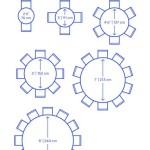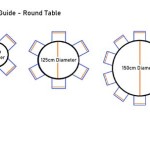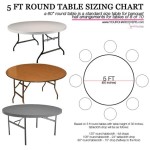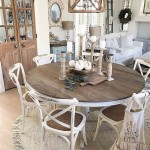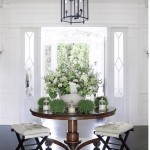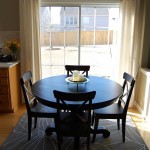Making the Most of Rattan Coffee Table Rounds
Rattan coffee tables, particularly those with a round shape, have become increasingly popular as focal points in living rooms, sunrooms, and even covered patios. Their natural texture, lightweight design, and versatility make them a desirable addition to various decor styles, from bohemian and coastal to modern farmhouse and contemporary. To truly maximize the potential of a rattan coffee table round, it is essential to consider its size, placement, styling, and maintenance. Understanding these factors will allow for the creation of a functional and aesthetically pleasing space.
The renewed interest in rattan furniture stems from a broader trend towards natural and sustainable materials in interior design. Rattan, a vine-like plant, is a quickly renewable resource, making it an environmentally conscious choice. Furthermore, its inherent durability allows it to withstand daily use while maintaining its visual appeal. Beyond these practical advantages, rattan evokes a sense of warmth and organic beauty that contrasts effectively with the often-stark lines of modern furniture. The round shape of these tables, in particular, promotes a sense of flow and encourages conversation, softening the overall look of a room.
Selecting the Right Size and Shape
The selection process begins with a careful assessment of the available space. Size matters greatly; a coffee table that is too large can overwhelm a room, while one that is too small might appear insignificant and fail to provide adequate surface area. As a general rule, the coffee table should be approximately two-thirds the length of the sofa. This proportion maintains visual balance and ensures ease of access from seating areas. The height of the table should also be considered. Ideally, it should be at the same height as the sofa cushions or slightly lower. This allows for comfortable reach while seated.
Regarding the round shape, its inherent advantage lies in its ability to facilitate movement and prevent sharp corners. This is particularly beneficial in smaller spaces or homes with young children. A round coffee table promotes a more open and inviting atmosphere. However, it is important to consider the shape of the surrounding furniture. A round coffee table often works best when paired with sofas and chairs that also feature curved lines or rounded edges. If the surrounding furniture is predominantly angular, the round table can provide a welcome contrast, but careful consideration should be given to maintaining visual harmony.
Before purchasing a rattan coffee table round, it is advisable to measure the intended space and create a floor plan, either physically or digitally. This will help visualize the placement of the table and ensure a comfortable and functional arrangement. Furthermore, consider the table's weight capacity, especially if it is intended to hold heavy objects or be used for activities such as board games or casual dining. Rattan's strength can vary depending on the quality of construction, so research and reviews are helpful in this area.
Optimal Placement for Function and Aesthetics
Placement is crucial in maximizing both the functionality and visual appeal of a rattan coffee table round. The primary function of a coffee table is to provide a convenient surface for drinks, snacks, books, and decorative items. Therefore, it should be easily accessible from all seating areas within the room. Generally, a distance of 14 to 18 inches between the coffee table and the sofa is recommended. This allows ample legroom and easy reach without feeling cramped.
In larger living rooms, a round coffee table can effectively anchor a seating arrangement, creating a focal point that draws the eye. In such cases, consider centering the table within the seating area, creating a symmetrical layout. However, in smaller spaces, an off-center placement might be more practical, especially if the table needs to be positioned closer to a wall or window. Experimenting with different arrangements can help determine the most visually appealing and functional placement for your specific needs.
Beyond its functional role, the coffee table's placement also impacts the overall aesthetic of the room. Consider the surrounding decor and architectural features. A rattan coffee table can be used to complement existing design elements or to create a contrasting focal point. For example, in a room with dark wood flooring, a light-colored rattan table can brighten the space and add a touch of lightness. Alternatively, in a room with predominantly light colors, a darker rattan table can provide a grounding element and add visual depth.
The interplay of light and shadow should also be considered when determining placement. Positioning the coffee table near a window can allow natural light to accentuate its texture and color, creating a warm and inviting atmosphere. However, direct sunlight can also fade the rattan over time, so it is important to protect the table from excessive sun exposure. This can be achieved by using curtains, blinds, or strategically positioning the table away from direct sunlight.
Styling Strategies for Rattan Coffee Table Rounds
Styling a rattan coffee table round is an opportunity to express personal style and enhance the overall aesthetic of the room. The key is to create a balanced and visually appealing arrangement that is both functional and decorative. Avoid cluttering the table with too many items, as this can make the space feel cramped and disorganized. Instead, focus on selecting a few key pieces that complement the table's natural texture and shape.
One popular styling approach is to incorporate a mix of textures and heights. A stack of coffee table books, a decorative tray, a vase with fresh flowers, and a set of coasters are all common elements that can add visual interest and functionality. The books provide a solid base, while the tray can be used to corral smaller items and create a sense of order. The flowers add a touch of natural beauty, and the coasters protect the table's surface from water rings. Varying the heights of these items creates a dynamic and visually engaging display.
Another important consideration is color coordination. The colors of the items on the coffee table should complement the overall color scheme of the room. Neutral tones, such as whites, creams, and browns, tend to work well with rattan, as they enhance its natural warmth and texture. However, pops of color can also be added to create visual interest. For example, a vase of bright blue flowers or a set of colorful coasters can add a touch of personality to the arrangement.
Consider the table's shape when selecting decorative items. The round shape of the table lends itself well to circular or organic shapes. Round trays, bowls, and candles can echo the table's form, creating a sense of visual harmony. However, angular or geometric shapes can also be used to create a contrasting effect. The key is to experiment with different combinations and find what works best for your personal style and the overall aesthetic of the room.
Personalization is essential. Incorporate items that reflect personal interests and experiences. Travel souvenirs, family photos, or handmade crafts can add a unique touch and make the space feel more personal and inviting. However, be mindful of maintaining a balance between personal expression and visual clutter. Avoid displaying too many personal items, as this can make the table feel disorganized and overwhelming.
Maintenance and Care for Longevity
Proper maintenance is crucial for preserving the beauty and extending the lifespan of a rattan coffee table round. Rattan is a natural material that is susceptible to damage from moisture, sunlight, and extreme temperatures. Regular cleaning and preventative measures can help protect the table from these elements and keep it looking its best.
Dusting the table regularly is essential for preventing the buildup of dirt and grime. Use a soft cloth or a vacuum cleaner with a brush attachment to remove dust from the surface and crevices of the rattan. Avoid using harsh chemicals or abrasive cleaners, as these can damage the material. A mild soap and water solution can be used for deeper cleaning, but be sure to dry the table thoroughly after cleaning to prevent moisture damage.
Protecting the table from sunlight is also important for preventing fading and discoloration. Direct sunlight can cause the rattan to dry out and become brittle over time. To avoid this, position the table away from direct sunlight or use curtains or blinds to filter the light. Applying a sealant or varnish can also help protect the rattan from UV damage.
Moisture is another potential threat to rattan furniture. Avoid placing the table in areas with high humidity or exposure to water. If the table gets wet, dry it immediately with a soft cloth. Consider using coasters or placemats to protect the surface from spills and water rings. In humid climates, using a dehumidifier can help maintain a stable moisture level and prevent the rattan from becoming moldy or mildewed.
Regular inspection of the table is also recommended. Check for any signs of damage, such as cracks, splints, or loose joints. Repair any damage promptly to prevent it from worsening. Small cracks can often be repaired with wood glue, while loose joints can be tightened with screws or nails. Professional furniture repair services are available for more extensive damage.

How To Decorate A Round Coffee Table 8 Designer Approved Methods Melanie Jade Design

Baxton Studio Aliane Modern Bohemian Natural Brown Antique Rattan Coffee Table

Monta Rattan Coffee Table

2 Tiered Japandi Round Wood Coffee Table With Rattan Base

Round Rattan Coffee Table With Storage Antique Farmhouse

Diy Round Fluted Coffee Table Step By Guide

Homary 2 Tiered Japandi Round Wood Coffee Table With Rattan Base

25 Unique Boho Coffee Table Ideas Alittledelightful

Diy Round Fluted Coffee Table Step By Guide

Ora Wicker Coffee Table Modern Furniture At The Citizenry
Related Posts

